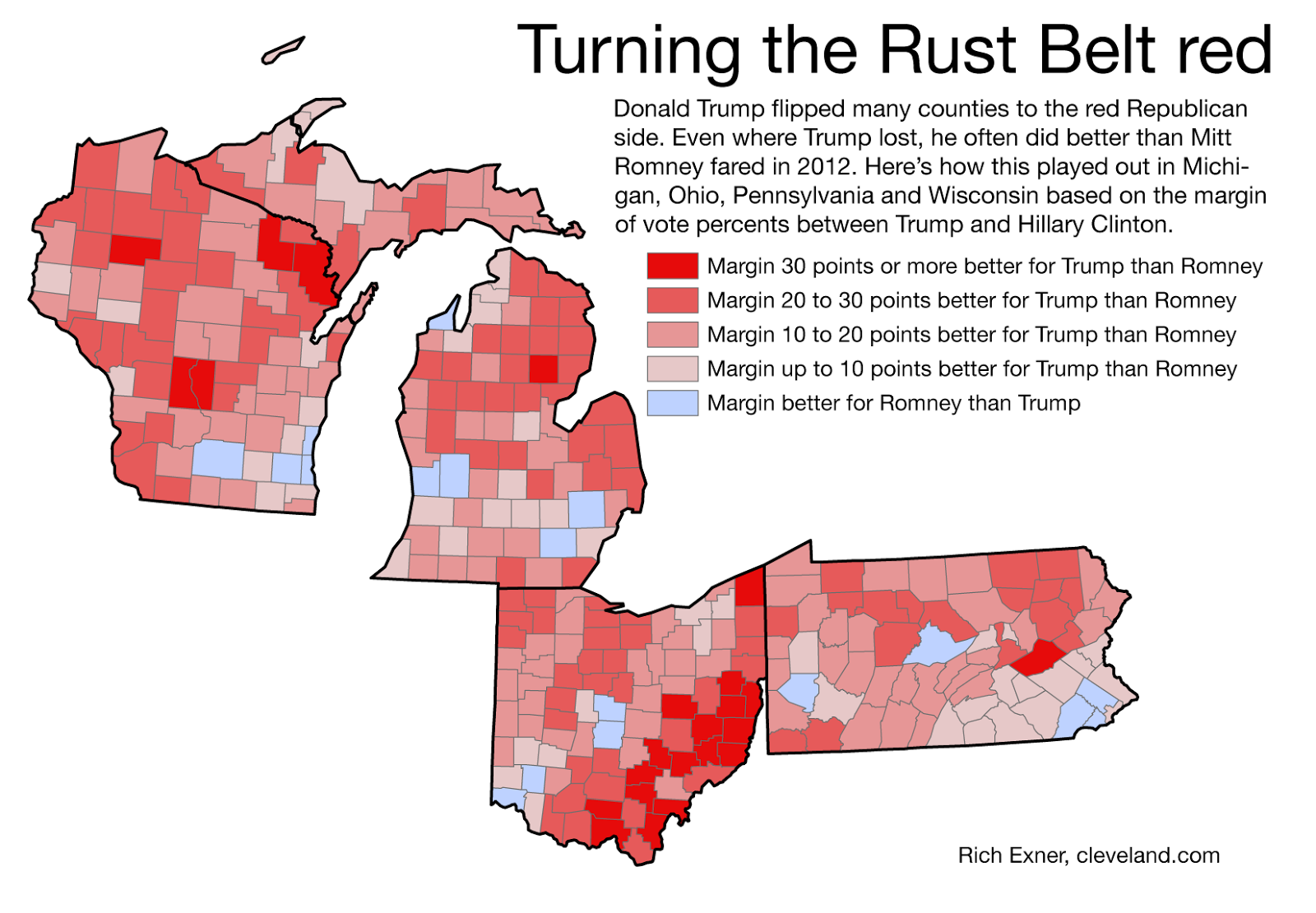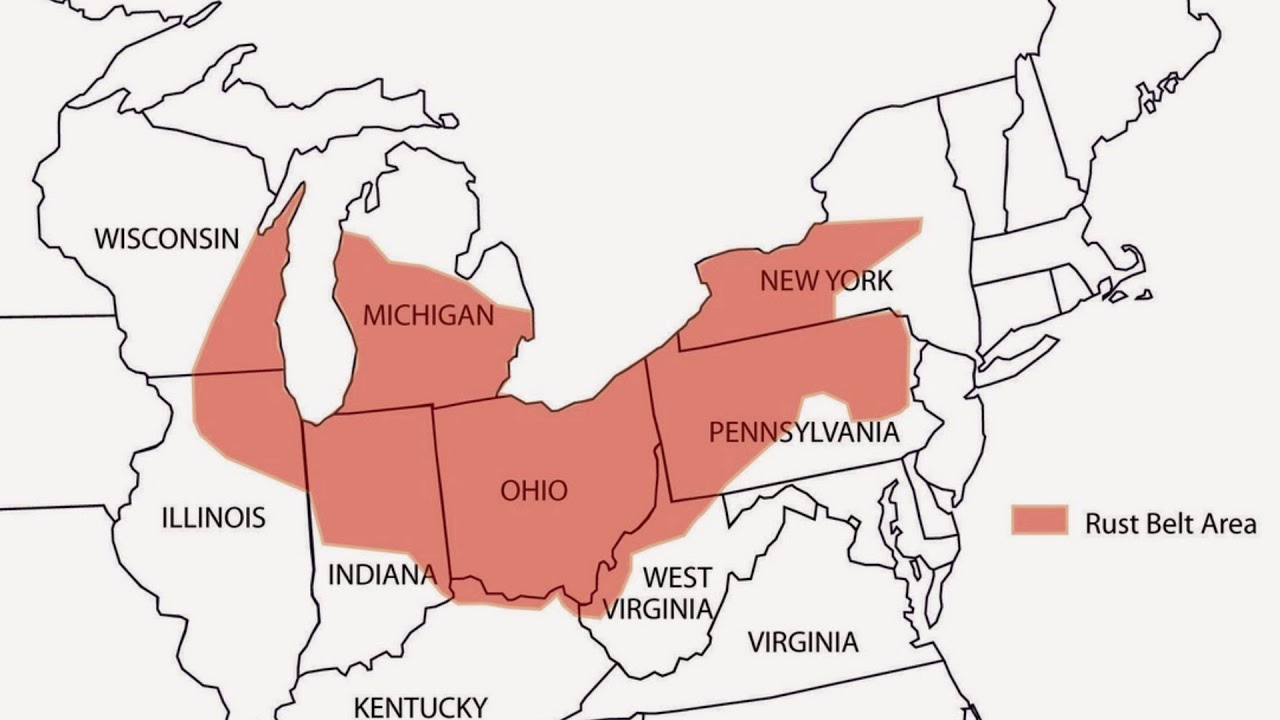
From the 1950s to the 1980s it experienced significant economic decline and dislocation largely because of foreign competition, increased labour costs, failure to modernize equipment and infrastructure, and technological advancements that replaced workers. The region’s prosperity sprang from its abundance of natural resources, including coal and iron ore reserves, as well as rivers and lakes that abetted transport and travel. Some schemes extend it east to include the former textile-manufacturing cities of Massachusetts, west to eastern Iowa, and south to the coalfields of Kentucky. Rust Belt, geographic region of the United States that was long the country’s manufacturing, steelmaking, and coal-producing heartland but that underwent dramatic industrial decline that resulted in widespread unemployment, increased poverty, decay, and population loss. Because the Rust Belt is defined by similar economic experience rather than by natural borders, its boundaries are debated however, it is generally viewed as encompassing a large part of the Midwest ( Indiana, Illinois, Michigan, Missouri, Ohio, and Wisconsin) along with Pennsylvania, West Virginia, and portions of New York. SpaceNext50 Britannica presents SpaceNext50, From the race to the Moon to space stewardship, we explore a wide range of subjects that feed our curiosity about space!.Learn about the major environmental problems facing our planet and what can be done about them! Saving Earth Britannica Presents Earth’s To-Do List for the 21st Century.Britannica Beyond We’ve created a new place where questions are at the center of learning.

100 Women Britannica celebrates the centennial of the Nineteenth Amendment, highlighting suffragists and history-making politicians.
#THE RUST BELT HOW TO#


Britannica Classics Check out these retro videos from Encyclopedia Britannica’s archives.


 0 kommentar(er)
0 kommentar(er)
